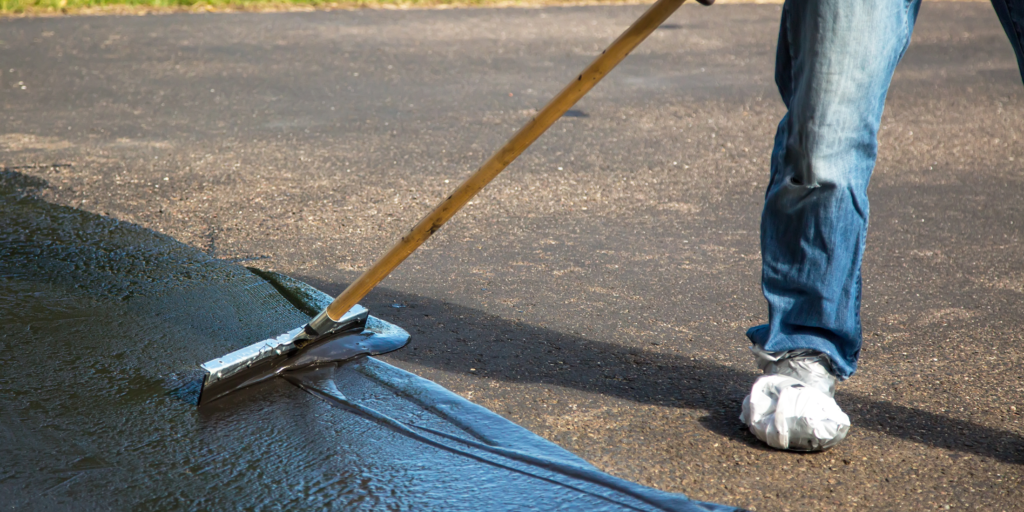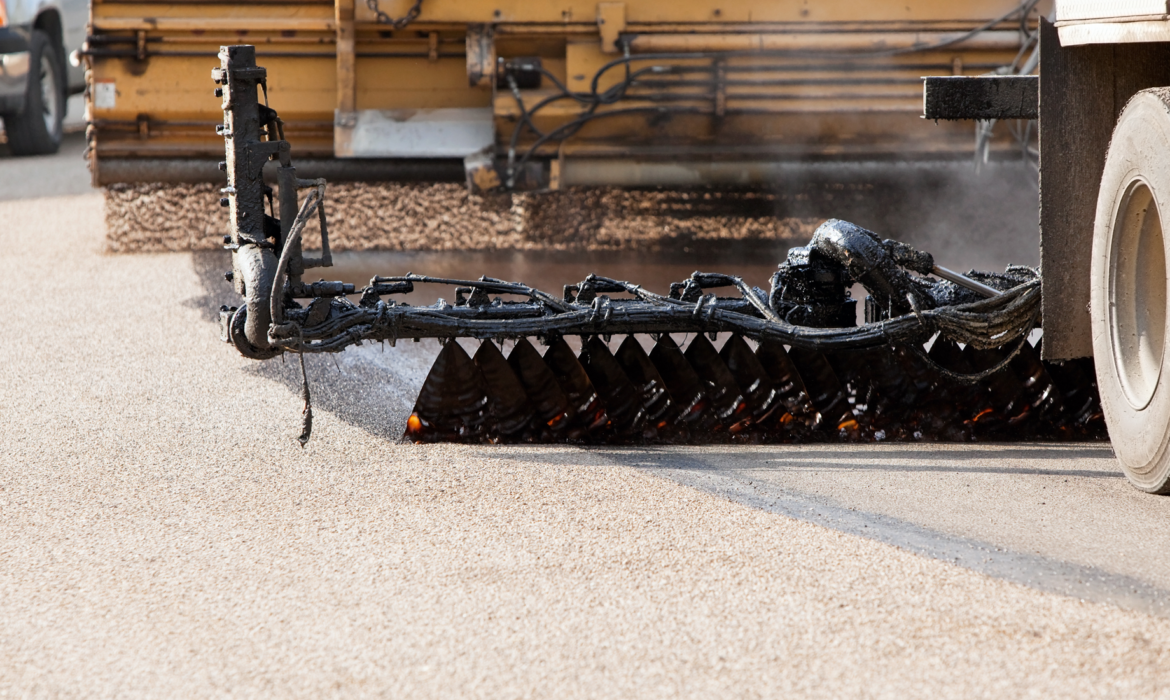Asphalt sealcoating is a process in which sealing protective coating is applied on asphalt pavement. The sealer acts as a shield that protects the pavement from the destructive effects of weather, traffic, and other aspects. it assists in preventing cracks, potholes, and degradation that would have shortened the lifespan of a road.
Pavement maintenance is important for several reasons. It also benefits the safety of both drivers and pedestrians. These cracks and potholes could also be dangerous and might cause accidents and injuries. Regular maintenance also helps to maintain the structural integrity of the pavement and prevents costly repairs or even replacement in the future.
Understanding the Importance of Pavement Maintenance
Failure to maintain pavement can lead to financial implications of great magnitude. Left unattended, cracks and potholes can deteriorate over time to cause even more severe damage which will cost a lot of money for their repair. In certain instances, the entire pavement may have to be replaced which can also cost a lot of money.
On the one hand, however, regular maintenance can be cost-effective in the long term. It tackles small issues early like repairing cracks and seal-coating so they do not grow into bigger problems that necessitate extensive repairs. This proactive approach is not only cost-effective but also ensures that your property preserves its value and appearance.

The Science Behind Asphalt Seal-coating
Seal-coating is the process of applying a protective layer over an asphalt pavement. It acts as a barrier to UV, water penetration, and oil spills among other harmful substances. It also aids in the filling of minor cracks and imperfections on pavement surfaces preventing them from widening up and causing more destruction.
It is important to note that the chemical composition of seal-coating materials varies based on whether they are coal tar-based or asphalt-based. Coal tar sealers consist of coal-tar pitch, water, sand, and clay with additives. They have been in use for many years and are popular because of their longevity and chemical resistance. Asphalt-based sealers, however during their manufacture involve asphalt cement water and additives. They are friendlier to the environment and simpler in application.
Benefits of Asphalt Seal-coating
One of the major advantages that asphalt seal-coating has is that it makes pavement last longer. Seal-coating protects the surface from the harmful effects of UV rays, water, and other destructive elements thus preventing cracks as well as deterioration. This can significantly prolong the pavement’s life and save you money in the long run.
Seal-coating also shields from weather elements like rain, snow, and ice. The sealant serves as a barrier against water seeping into the pavement and causing damage. It also keeps off oxidation, which may result in the occurrence of brittleness on the pavement that becomes prone to cracking.
In addition to their protective function, seal-coating enhances the visual appearance of pavements. As time passes, the asphalt can become faded and dull from sunlight exposure and traffic. Seal-coating renews the dark black shade of asphalt, making it look fresh and properly maintained.
Types of Seal-coating Materials
There are two main types of seal-coating materials: there are coal tar-based sealers and asphalt-based sealers. Coal tar sealers have been a very popular product for many years now and people know that they are pretty tough as well as resistant to chemicals. They do very well in safeguarding against oil spills and other substances that would harm the pavement. They are however potent but have a strong smell and can be harmful if applied wrongly.
One significant trend observed in developed countries is the use of asphalt-based sealers since they are environmentally friendly and easy to apply. They are produced from asphalt cement which is a waste product of petroleum refining. Asphalt-based sealers are also less toxic than coal tar and have a much lower odor. They also dry faster hence accessing the pavement becomes quicker.
Both sealers types have their advantages and disadvantages, so the selection depends on various factors including climate conditions, financial limitations or personal emotions. Therefore, it is highly recommended to contact a professional who would help define the most appropriate option for you.
How to Prepare Pavement for Seal-coating
Prior to applying seal-coating, proper preparation of the pavement is important. This includes surface cleaning and filling cracks or potholes. Cleaning can be done with a power washer or broom to remove dirt, debris, and vegetation. It is necessary to make sure the surface has been fully cleaned and dried before seal-coating it.
Fill the cracks and potholes prior to seal-coating so they can grow beyond their size leading to more damage. This can be done with a crack filler or patching compound – depending on the size and severity of damage. The instructions specified by the manufacturer should be followed, and there must also be an adequate period for drying before applying a seal coating.
The Seal-coating Process: Step-by-Step
The seal-coating process typically has several steps to ensure that the finish is smooth and even. First of all, seal-coating material is prepared following the manufacturer’s recommendations. This can be made using a specialized mixing machine or manual with the help of a paddle mixer.
Once they are blended, the material is applied to the pavement using a squeegee or spray system. The application method varies based on the size of the area to be treated and personal preferences. Applying the seal-coating evenly and ensuring that all areas are covered is important.
After the application of seal-coating, it is required to get cured and dry. Drying time varies according to temperature, humidity, and thickness of the coating. The instructions from the manufacturer regarding drying time must be followed and no foot or traffic should be allowed until seal-coating is fully dry.
Curing and Drying Time for Seal-coating
The duration needed to cure and dry seal-coating may significantly vary based on several factors. Seal coating, as a general rule, dries typically around 24 to 48 hours. However, it can be influenced by factors like temperature humidity and thickness of the coating.

Stressing higher temperatures and lower humidity can increase the drying process, but lower temperatures or a high level of moisture will slow it down. When planning to seal coat, these considerations are important, so you give the right amount of drying time before traffic on pavement.
Drying time is also affected by the thickness of the seal coating. Thicker coatings dry more slowly than thinner ones. To dry properly, the thickness of coating should always be adhered strictly to the manufacturer’s guidelines.
How Often Should You Seal-coat Your Pavement?
Seal-coating is performed at different frequencies depending on multiple sources like climate, traffic volume, and pavement condition. Asphalt pavement should generally be sealed about once every two or three years. This is however more frequent in areas with harsh climates or heavy traffic.
Conducting regular pavement inspections can help you determine when to seal-coat. If there are signs of spalling such as splinters, fading color, or a rough texture you may need to reseal the surface. It is necessary not to wait until serious damage takes place before responding.
Climate and traffic volume can also determine how often you should seal-coat your pavement. …..More frequent seal-coating may be needed in areas where the weather conditions are extreme or traffic volume is high to ensure proper protection and longevity of pavement.
Common Mistakes to Avoid During Seal Coating
Seal coating is a rather simple process, however, it’s important to be aware of the mistakes that are often made. A common mistake is the over-application of seal-coating material. Too thick of a coating will cause longer drying times and an uneven finish. The recommended thickness of the coating should be followed as per the instructions given by the manufacturer.
Seal coating in the wrong weather conditions is another common mistake. It is necessary to carry out seal-coating on a dry and warm day for effective drying and curing. Seal coating in wet or cold conditions can lead to poor adhesion and a finish less durable.
The seal coat should also not be applied too often. Regular maintenance is necessary; however, the over-seal coating may cause layers to build up and diminish the visual appeal as well as the performance of the pavement. It is essential to adhere to the suggested frequency for seal-coating and, if in doubt, seek advice from a professional.
The Long-Term Benefits of Asphalt Seal Coating
In conclusion, asphalt seal-coating is an important item in pavement maintenance that provides many advantages. Seal coating prolongs the life of the pavement by shielding it against weather, traffic, and routine elements that lead to early wear; this eliminates costly repairs or replacement.
In addition to saving money, regular maintenance such as seal-coating ensures the safety and appearance of pavement. The selection of a suitable type of seal-coating material along with appropriate preparation and application approaches are important to achieve ideal results.
It pays to invest in frequent asphalt seal-coating and other regular pavement maintenance. By being proactive in ensuring and maintaining your pavement you will have a safe, durable, and attractive surface for many years.

